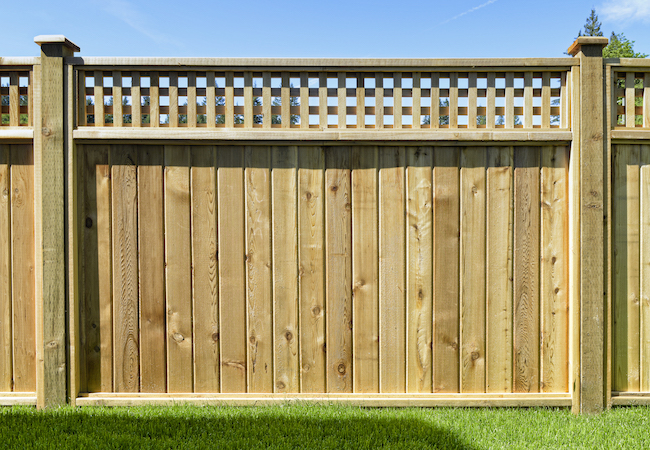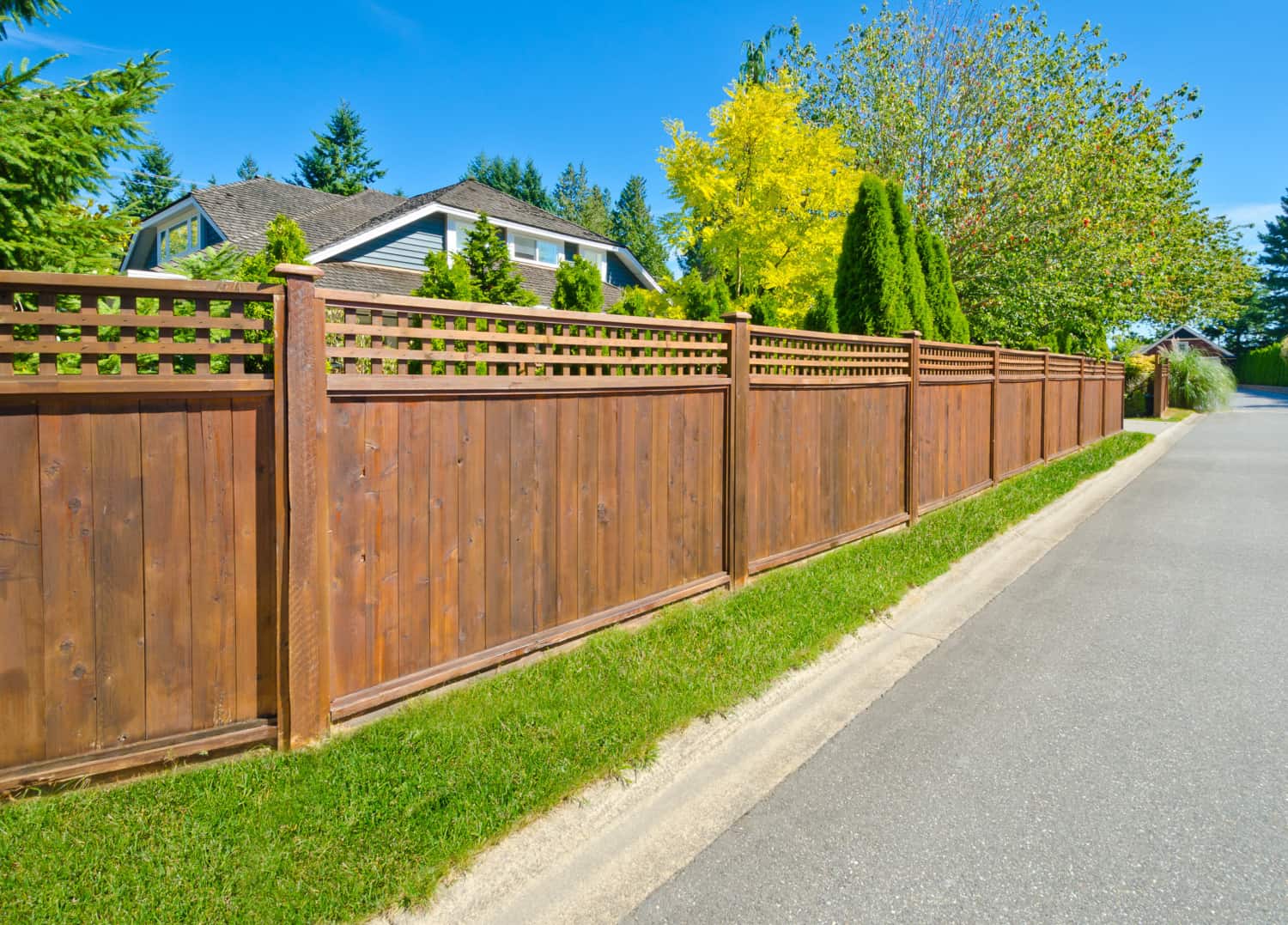All Categories
Featured
Installing a fence on your home can add privacy, security, and visual allure, but before you start digging openings and establishing blog posts, it's vital to comprehend whether you need an authorization. The kind of fencing you prepare to set up, where it will be placed, and regional zoning legislations can all affect the permitting procedure. Not acquiring the necessary permits might result in penalties or the demand to remove the fencing. Below's what you need to recognize to ensure a smooth installment procedure.
Why Are Allows Essential for Fencing Installment? Licenses are necessary for making certain that your fence conforms with local zoning legislations and building regulations. These policies aid make certain the safety and security of your home and the bordering area. Furthermore, allows prevent disagreements with next-door neighbors or regional authorities, specifically when it involves residential or commercial property lines, height constraints, and total design.
In most cases, regional authorities call for licenses to regulate points like visibility at crossways or the closeness of a fencing to public areas like walkways or roadways. Permits also assist make certain that fencings are set up correctly and securely, specifically when it pertains to special materials or high fencings.
Usual Kinds of Licenses for Fence Setup. The type of fencing you wish to mount and your location will certainly establish which authorizations are required. Right here are the most usual types:
Structure Permit. A structure permit is usually required for fences that exceed certain height restrictions (frequently over 6 feet), lie near a public road or sidewalk, or are made from details products. Structure allows make sure that the structure meets regional building codes, consisting of security requirements.
Zoning Authorization. Zoning permits are frequently called for to make sure that your fencing conforms with local zoning laws. Zoning laws can specify where a fencing can be put on your residential or commercial property (e.g., along home lines or in front backyards), as well as established limitations on fence height. These regulations are created to avoid obstructions that might impact web traffic safety or area looks.
![]()
Problem Permit. In some locations, you may need a setback license to place your fencing a specific distance from residential or commercial property roads, utilities, or lines. Problems are intended to maintain proper area in between frameworks and home boundaries, decreasing potential conflicts with next-door neighbors or public framework.
Homeowners Organization (HOA) Approval. You will likely need authorization from the HOA prior to mounting a fencing if your residential property is component of a community controlled by a Homeowners Organization (HOA) HOA standards commonly govern the design, elevation, materials, and even color of fencings, making sure that they match the general aesthetic of the area.
The Process for Obtaining a Fencing Permit. To obtain a fence license, you typically need to contact your neighborhood city or region office. A lot of areas have a structure division or preparation office where you can obtain permits. The procedure involves completing an application and offering in-depth details about your proposed fencing, including:
Fence style (materials, elevation, style) Place on the residential property. Property line information (for precise placement) In a lot of cases, a site plan revealing the recommended fencing's setting will be called for. You may likewise need to pay an authorization fee, which can differ based on area and the intricacy of the task.
Once you send your application, the regional authorities will examine it to guarantee the fence abides by local laws. Depending on your location, you may also need to enable or arrange an evaluation for a residential or commercial property study.
When Do You Not Required a Permit? Sometimes, an authorization may not be needed. Usually, you could not need a license if:
![]()
The fencing is under a particular elevation (commonly 3-4 feet for front yards) You're changing an existing fencing with the exact same type and elevation. The fence is short-term (such as a garden fence) However, it's always an excellent idea to talk to your regional building or zoning division to confirm the demands, as policies can differ.
Effects of Not Obtaining an Authorization. In some cases, you might require to re-install the fencing according to code, which can be expensive and lengthy. Furthermore, not complying with the appropriate allowing procedure can produce issues with neighbors, specifically if your fencing expands past your residential property line or does not fulfill height or style demands.
Verdict. Before mounting a fencing, make certain you recognize the local policies and whether you require a permit. It's essential to contact your neighborhood building or zoning workplace, in addition to your HOA if applicable, to understand what's called for. By acquiring the correct authorizations, you'll ensure that your fencing is lawfully certified, secure, and totally free from future difficulties. Taking this additional step will certainly save you money and time in the lengthy run while providing satisfaction that your job gets on the appropriate track.
Why Are Allows Essential for Fencing Installment? Licenses are necessary for making certain that your fence conforms with local zoning legislations and building regulations. These policies aid make certain the safety and security of your home and the bordering area. Furthermore, allows prevent disagreements with next-door neighbors or regional authorities, specifically when it involves residential or commercial property lines, height constraints, and total design.
In most cases, regional authorities call for licenses to regulate points like visibility at crossways or the closeness of a fencing to public areas like walkways or roadways. Permits also assist make certain that fencings are set up correctly and securely, specifically when it pertains to special materials or high fencings.
Usual Kinds of Licenses for Fence Setup. The type of fencing you wish to mount and your location will certainly establish which authorizations are required. Right here are the most usual types:
Structure Permit. A structure permit is usually required for fences that exceed certain height restrictions (frequently over 6 feet), lie near a public road or sidewalk, or are made from details products. Structure allows make sure that the structure meets regional building codes, consisting of security requirements.
Zoning Authorization. Zoning permits are frequently called for to make sure that your fencing conforms with local zoning laws. Zoning laws can specify where a fencing can be put on your residential or commercial property (e.g., along home lines or in front backyards), as well as established limitations on fence height. These regulations are created to avoid obstructions that might impact web traffic safety or area looks.

Problem Permit. In some locations, you may need a setback license to place your fencing a specific distance from residential or commercial property roads, utilities, or lines. Problems are intended to maintain proper area in between frameworks and home boundaries, decreasing potential conflicts with next-door neighbors or public framework.
Homeowners Organization (HOA) Approval. You will likely need authorization from the HOA prior to mounting a fencing if your residential property is component of a community controlled by a Homeowners Organization (HOA) HOA standards commonly govern the design, elevation, materials, and even color of fencings, making sure that they match the general aesthetic of the area.
The Process for Obtaining a Fencing Permit. To obtain a fence license, you typically need to contact your neighborhood city or region office. A lot of areas have a structure division or preparation office where you can obtain permits. The procedure involves completing an application and offering in-depth details about your proposed fencing, including:
Fence style (materials, elevation, style) Place on the residential property. Property line information (for precise placement) In a lot of cases, a site plan revealing the recommended fencing's setting will be called for. You may likewise need to pay an authorization fee, which can differ based on area and the intricacy of the task.
Once you send your application, the regional authorities will examine it to guarantee the fence abides by local laws. Depending on your location, you may also need to enable or arrange an evaluation for a residential or commercial property study.
When Do You Not Required a Permit? Sometimes, an authorization may not be needed. Usually, you could not need a license if:

The fencing is under a particular elevation (commonly 3-4 feet for front yards) You're changing an existing fencing with the exact same type and elevation. The fence is short-term (such as a garden fence) However, it's always an excellent idea to talk to your regional building or zoning division to confirm the demands, as policies can differ.
Effects of Not Obtaining an Authorization. In some cases, you might require to re-install the fencing according to code, which can be expensive and lengthy. Furthermore, not complying with the appropriate allowing procedure can produce issues with neighbors, specifically if your fencing expands past your residential property line or does not fulfill height or style demands.
Verdict. Before mounting a fencing, make certain you recognize the local policies and whether you require a permit. It's essential to contact your neighborhood building or zoning workplace, in addition to your HOA if applicable, to understand what's called for. By acquiring the correct authorizations, you'll ensure that your fencing is lawfully certified, secure, and totally free from future difficulties. Taking this additional step will certainly save you money and time in the lengthy run while providing satisfaction that your job gets on the appropriate track.
Latest Posts
Find Out Why Chicago Drivers Select Montclare Auto Repair for Reliable Service and Significant Savings
Published May 26, 25
1 min read
Uncover Premier Auto Repair Care offered by Montclare Auto Repair – Keep Your Car Running Smoothly
Published May 24, 25
1 min read
Discover Reduce Expenses on Car Maintenance with Montclare Auto Repair’s Limited-Time Deals
Published May 23, 25
1 min read
More
Latest Posts
Find Out Why Chicago Drivers Select Montclare Auto Repair for Reliable Service and Significant Savings
Published May 26, 25
1 min read
Uncover Premier Auto Repair Care offered by Montclare Auto Repair – Keep Your Car Running Smoothly
Published May 24, 25
1 min read
Discover Reduce Expenses on Car Maintenance with Montclare Auto Repair’s Limited-Time Deals
Published May 23, 25
1 min read